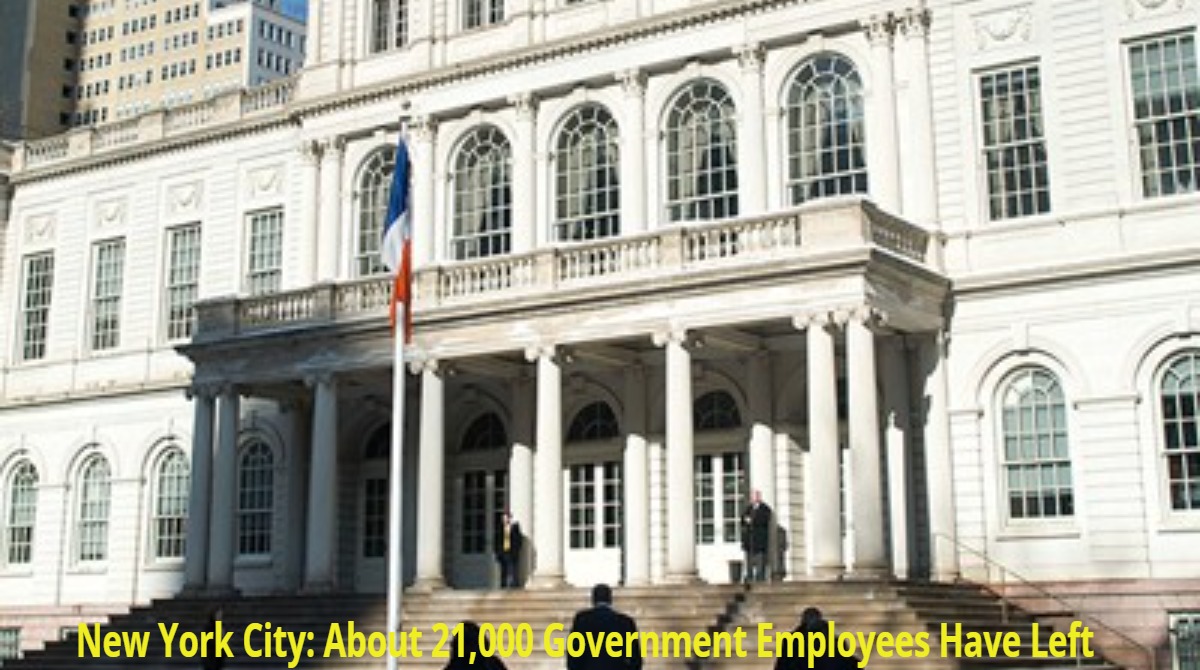A recent report from the office of state comptroller Tom DiNapoli claims that over the last two years. New York City lost more than 19,000 full-time employees. The highest level of municipal staffing declined in more than a decade.
It is well known that the City’s full-time workforce experiences attrition and hiring issues. Agency heads have expressed concern about the impact on service delivery, City Council members have questioned the causes, and municipal workers have spoken of burnout. Mayor Eric Adams has turned to unconventional solutions to boost staffing levels temporarily.

However, DiNapoli’s report focuses more specifically on how the City’s staffing shortage appeared as of this August. Here are five things you need to be aware of.
According to estimates, 21,000 positions are open in New York City.
According to the comptroller’s report, As of this August, there were a projected 21,063 vacant homes in New York City. The vacancy rate of 7%, and from 2012 to 2020, the average citywide vacancy rate at significant agencies was 1.7%.
According to the report, Two primary factors account for the high rate of open positions: a brief decline in hiring during Fiscal Year 2021 and a sharp increase in attrition. Even though hiring and attrition problems affect government workforces outside New York City, some lawmakers raise concerns. About how a persistent labor shortage will impact service delivery and push for changes to city regulations, such as the requirement for full-time in-office work.
New York City Comptroller Brad Lander recently told City & State about several issues. The in-office work policy, drawn-out processes for hiring employees, and filling positions with lower-paying employees likely contribute to the City’s hiring and attrition problems. Lander said he permits staff to work on a hybrid schedule.

High staffing declines occurred in social services and uniformed services.
The state comptroller’s office reported that over 19,000 full-time positions lost from the City’s workforce between June 2020 and August 2022. But some agencies are hit more severely than others—the Department of Correction (where some reduction plans). The Taxi and Limousine Commission and the Department of Investigation observed the most significant declines and more than three times the citywide average, at 23.6%, 22.2%, and 20.5%, respectively, out of the 37 agencies with 250 or more full-time employees.
Some social services organizations have also observed more than twice the citywide average declines. Since June 2020, the number of employees at the Department of Homeless Services has decreased by 15.4%. Compared to a 13.7% decrease at the Department of Social Services.
Those in short supply include lawyers, fire inspectors, and corrections officers.
DiNapoli’s report focuses on the specific positions that have been leaving. Executive assistants, correction officers, and groundskeepers/gardeners were the city service positions that experienced the steepest declines over the previous two years. Lawyers (19.3% decline), fire inspection and prevention (16.7% decline), and accountants and auditors (16.2% decline) are other professions that have seen significant reductions.
The report also focuses on how specific agency divisions have a lot of open positions. For instance, the Department of Social Services child support services unit of appropriation had a budget for 775 full-time employees as of this August but only employed 422, representing a 45.5% vacancy rate. The report stated that the Department of Education and social service organizations are home to many of these divisions with high vacancy rates. These divisions include those that the City has designated as priorities. An increase in demand in recent years.
Although hiring is significantly up, exits are up even more.
According to the report, losing employees is a more significant issue for the City than hiring new ones. New York City hired over 40,000 new employees in the fiscal year 2022, much more than the average amount over the previous ten years. However, the City’s hiring still needs to catch up to employee departures.
Savings are made when vacancies are reduced, but at what cost?
City Hall has instructed city agencies to reduce city-funded spending this fiscal year by 3% and 4.75% in coming years to balance the budget despite a rocky economic future and projected budget gaps in the billions. However, the City pledge not to implement any layoffs to achieve those savings and agencies have already submitted plans to do so without adversely affecting essential services, though those plans have yet to be made public.

While the comptroller’s report acknowledges that cutting existing vacancies from the budget can sometimes result in cost savings, it also warns the City to avoid cutting urgently needed positions. Understanding how the uneven decline in staffing affected the City’s performance in providing services. In June 2020, it should be able to decide which positions to cut in order to save money and which to fill in order to improve or expand municipal services.

